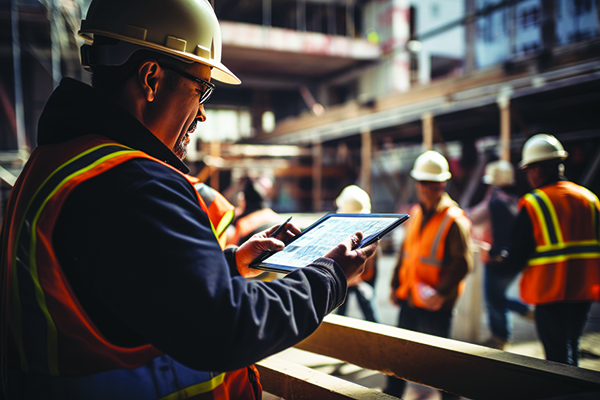Teaming Up to Shake Up Offsite Construction
In the dynamic playground of offsite construction, the call for innovation echoes louder than ever. It’s not only about keeping up; it’s also about leading the charge into a future where buildings come together not just faster, but smarter and more sustainably.
But let’s get one thing straight: this isn’t a solo mission. It’s a full-on ensemble cast. Every role, from the visionary architect to the precision-driven manufacturer, is a star player, and all of them must work together as a team. So, let’s dive deeper into how we make this collaborative innovation not just a lofty ideal, but a down-to-earth practice.
All on the Same Page
Picture this: offsite construction as the solution we’ve been waiting for, to help meet our housing needs. It has the potential to fix our chronic labor shortages, to ease our environmental conscience, and maybe, just maybe, to keep our projects on time and under budget. But as noted above, unlocking this potential is less about solitary genius and more about collective action. It’s about creating a space where everyone, with their diverse skills and perspectives, contributes to a shared vision.
An offsite construction crew is as diverse as it gets. Beyond the usual suspects — architects, engineers, factory workers and builders — we have material suppliers, regulatory experts, and, crucially, the end-users. Each has a part to play in the innovation orchestra. For instance, material suppliers are not just vendors; they’re potential innovators who can provide the manufacturer with insights into new, sustainable materials or more efficient building techniques.
And let’s not forget the building occupants/end-users. Their lived experiences can offer invaluable feedback that drives meaningful innovation. For example, understanding how occupants like to furnish, decorate and move in the space can educate innovation in layouts, interior finishes, and more.

Leveraging Team Huddles
Imagine if every project kicked off not just with a briefing but with a brainstorming session where every department, from design to logistics, shared their visions and concerns. This is where cross-functional collaboration shines, transforming potential roadblocks into opportunities for innovation. For example, some design features, such as certain exterior cladding choices, will affect transportation logistics and costs. Having these two functions communicating early on can head off issues.

It’s not just about meeting project specifications but about challenging them, asking, “How can we do this better?” This ethos not only leads to smarter solutions, but also fosters a culture where innovation is the expectation, not the exception.
Casting a Wide Net
Open innovation is our golden key to breaking out of the echo chamber in which we recycle the same ideas that have not addressed unmet customer needs in the past. It’s about recognizing that great ideas can come from anywhere — whether it’s a startup tech company with a groundbreaking software solution, or a university research project exploring new materials.

By casting our net wide and soliciting solution development ideas from multiple sources, we’re not just sourcing ideas; we’re inviting fresh perspectives that challenge our assumptions and push our boundaries. This approach is particularly potent in offsite construction, where the integration of new technologies and methodologies can lead to significant leaps in efficiency and sustainability.
Talk Back, Please!
The feedback loop is the unsung hero of continuous improvement. It’s about creating a culture where feedback is not only welcomed, but actively sought at every stage of the project. From the factory floor to the final installation, every observation, suggestion, or critique is a piece of the puzzle.

How often do you ask your set crews how you can improve your module design to optimize the setting process? I guarantee they’ll give you an earful when you ask. Encouraging open, constructive dialogue ensures that lessons learned are lessons applied, making each project a stepping stone to perfection.
Worth the Effort
Here’s the deal: collaboration needs to be more than just a policy; it needs to be a part of the corporate DNA. This means going beyond the occasional team-building retreat to embedding incentives for collaborative success into the very fabric of the organization. Whether it’s a bonus system that rewards innovative team solutions or a career path that values cross-functional expertise, the message should be clear: when everyone works together, everyone grows together.
As we stand on the brink of what could be the golden era for offsite construction, the path forward is clear. It’s paved with collaboration, open doors and continuous feedback. It’s about embracing Jobs-To-Be-Done to zero in on what really matters, employing a data-driven approach to decision-making and applying Lean principles to streamline our processes. But most importantly, it’s about recognizing that our greatest strength lies in our collective expertise and creativity. (For more on Jobs-to-Be-Done, see my January 2023 article: What Do Your Customers Really Want?)
So, as we rally the troops — whether they’re wielding CAD software or caulking guns — let’s commit to a future where innovation isn’t just a department, but a culture. Where every project, big or small, is an opportunity to learn, improve and innovate. And where the construction industry isn’t just catching up to the times, but setting the pace. Here’s to building a future that’s not just built to last, but built to lead.
Daniel Small is the COO of Stack Homes, a modular manufacturer in Salt Lake City, Utah. As a renowned expert, thought leader, and consultant in Lean process optimization and innovation in offsite construction, he has transformed the productivity and efficiency of many offsite factories over his 22+-year career in the industry.







